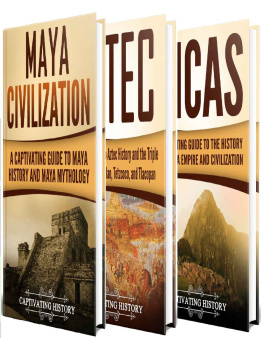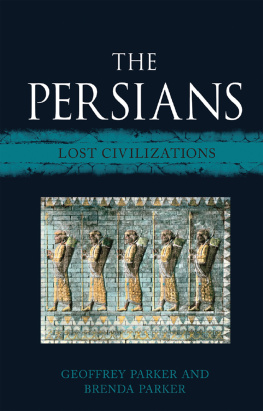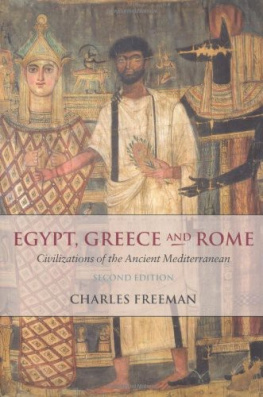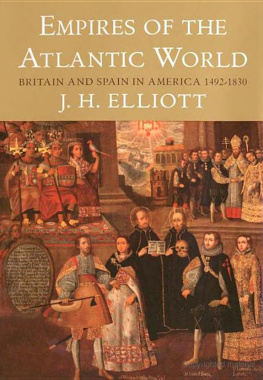BIBLIOGRAPHY
Bancroft-Hunt, Norman. Historical Atlas of Ancient America (Mercury, 2009).
Coe, M.D., and Koontz, Rex. Mexico: From the Olmecs to the Aztecs, 6th ed., rev. and expanded (Thames & Hudson, 2008).
Foster, L.V. Handbook to Life in the Ancient Maya World (Oxford Univ. Press, 2005).
Ganeri, Anita. Mesoamerican Myth: A Treasury of Central American Legends, Art, and History (Chartwell, 2007).
Green, Jen, and others. The Encyclopedia of the Ancient Americas (Southwater, 2001).
Montgomery, John. How to Read Maya Hieroglyphs (Hippocrene, 2003).
Noble, D.G. Ancient Ruins of the Southwest: An Archaeological Guide, 2nd ed. (Northland, 2000).
Pauketat, Timothy, and Bernard, N.S. Cahokia Mounds (Oxford Univ. Press, 2004).
Phillips, Charles. Aztec & Maya: The Complete Illustrated History (Metro, 2008).
Silverman, Helaine, and Isbell, W.H., eds. Handbook of South American Archaeology (Springer, 2008).
VanDerwarker, A.M. Farming, Hunting, and Fishing in the Olmec World (Univ. of Texas Press, 2006).
Wood, Marion. Ancient Maya and Aztec Civilizations, 3rd ed. (Chelsea House, 2007).
CHAPTER 1
THE ORIGINS OF EARLY AMERICAN CIVILIZATIONS
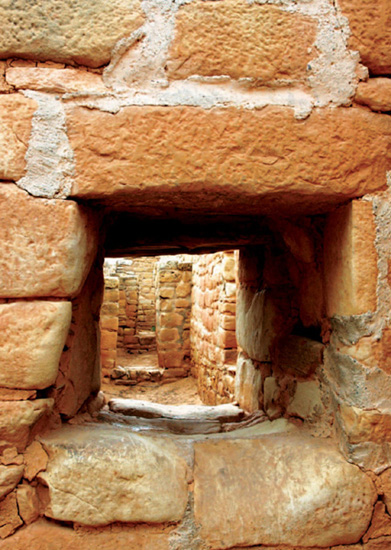
T he first people to live in the Americas were the Indians, or Native Americans. Their settlements ranged across the Western Hemisphere and were built on many of the sites where modern cities now rise. Indian families and traders used paths now followed by roads and railroads. Indian farmers were the first in the world to domesticate corn (maize), beans, squash, potatoes, tomatoes, and many other food plants that help feed the peoples of the world today. These resources, along with others provided by hunting, gathering, and fishing, were used to support communities ranging from small villages to expansive cities with tens of thousands of residents.
The first Indians arrived during the last ice age, when thick ice sheets covered much of northern North America. As the ice sheets absorbed water, sea levels dropped and a land bridge emerged along the present-day Bering Strait. From about 30,000 to 12,000 years ago the land bridge connected northeastern Asia to what is now Alaska. Humans began to cross over from Asia at least 13,000 years ago and perhaps much earlier. When the ice sheets melted, the land bridge disappeared under the rising seas and the migration ended.

Early humans crossed from northeastern Asia to the Americas over a now-submerged land bridge across the Bering Strait. The locations of archaeological sites in the Americas suggest the migration routes followed by Paleo-Indians after the glaciers of the late Pleistocene Epoch melted.
THE CLOVIS AND FOLSOM DISCOVERIES
In 1908 George McJunkin, a ranch foreman and former slave, reported that the bones of an extinct form of giant bison were eroding out of a wash near Folsom, N.M. An ancient spear point was later found embedded in the animals skeleton. In 1929 teenager Ridgley Whiteman found a similar site near Clovis, N.M., albeit with mammoth rather than bison remains. The Folsom and Clovis sites yielded the first indisputable evidence that ancient Americans had co-existed with and hunted the huge, now-extinct mammals called megafauna, including giant bison, mammoths, mastodons, giant ground sloths, and saber-toothed cats. Previously, most scholars had doubted this possibility.
The earliest peoples of the Americas are known as Paleo-Indians. They lived by hunting and gathering. As people began to settle down and expand their diets, they developed what are called Archaic cultures. In addition to foraging, Archaic peoples began to experiment with agriculture.
By about 2300 BC Indians in the Andes Mountains of South America had adopted a fully agricultural way of life. They began to settle in villages. Farming villages appeared by 2000 BC in Middle America (present-day Mexico and Central America) and somewhat later in Northern America (present-day United States and Canada). Over time these prehistoric farmers developed new kinds of societies. Advanced cultures arose in Middle and South America that rivaled the great civilizations of ancient Egypt, Mesopotamia, and China.
PALEO-INDIANS
The very early people of the Americas were the Paleo-Indians. They shared some cultural traits with peoples of Asia, such as the use of fire and domesticated dogs. However, they do not seem to have used other Old World technologies such as grazing animals, domesticated plants, and the wheel.
Paleo-Indians shared the land with such large mammals as mammoths, mastodons, and giant bison. Archaeological sites of Paleo-Indians often include bones from these animals. This has sometimes led to the mistaken idea that these peoples only hunted big game. By the turn of the 21st century, however, excavations had shown that Paleo-Indians used both animal and wild plant foods, including fruit, tubers, and even seaweed.

Mastodons and woolly mammoths were hunted by some Paleo-Indians. These animals were similar in size to modern African elephants but, unlike the modern variety, they were adapted to Ice Age temperatures. Encyclopdia Britannica, Inc.
CLOVIS AND FOLSOM CULTURES
The best-known Paleo-Indian cultures of North America are Clovis and Folsom. The Clovis culture was the older of the two. Its people left behind one of the most distinctive Paleo-Indian artifact typesthe Clovis point. These spear points are leaf-shaped and made of stone. They are also fluted, meaning that they have grooves on each flat side. The culture was named for an archaeological site near Clovis, N.M., where the first such point was found among mammoth bones in 1929. Scrapers (used to clean the hide) and other artifacts used to process meat have also been found at Clovis sites. The Clovis culture was long believed to have lasted from about 9500 to 9000 BC. However, early 21st-century research suggested it may have lasted a shorter time, from about 9050 to 8800 BC.

The Clovis spear point is a characteristic Paleo-Indian artifact. iStockphoto/Thinkstock
Folsom culture seems to have developed from Clovis culture. It is also known for its own distinctive spear point. Like Clovis points, Folsom points are leaf-shaped, but they are more carefully made and have much larger flutes. The first Folsom point was discovered in 1908 at a site near Folsom, N.M., along with the remains of a now-extinct form of giant bison. The Lindenmeier site, a Folsom campsite in northeastern Colorado, has yielded a variety of scrapers, gravers (used to engrave bone or wood), and bone tools. The Folsom culture is thought to have lasted from about 9000 to 8000 BC. Related Paleo-Indian cultures, such as Plano, continued to between 6000 and 4000 BC.
PRE-CLOVIS CULTURES
Discoveries of several sites in the late 20th century challenged the longstanding belief that Clovis people were the first Americans. Monte Verde, a site in Chile, dates to about 10,500 BC. It is the oldest confirmed site of human habitation in the Americas. A number of other sites may be as early or earlier than Monte Verde. In North America archaeologists have found evidence of pre-Clovis cultures at the Topper site in South Carolina, Cactus Hill in Virginia, and Schaefer and Hebior in Wisconsin.











